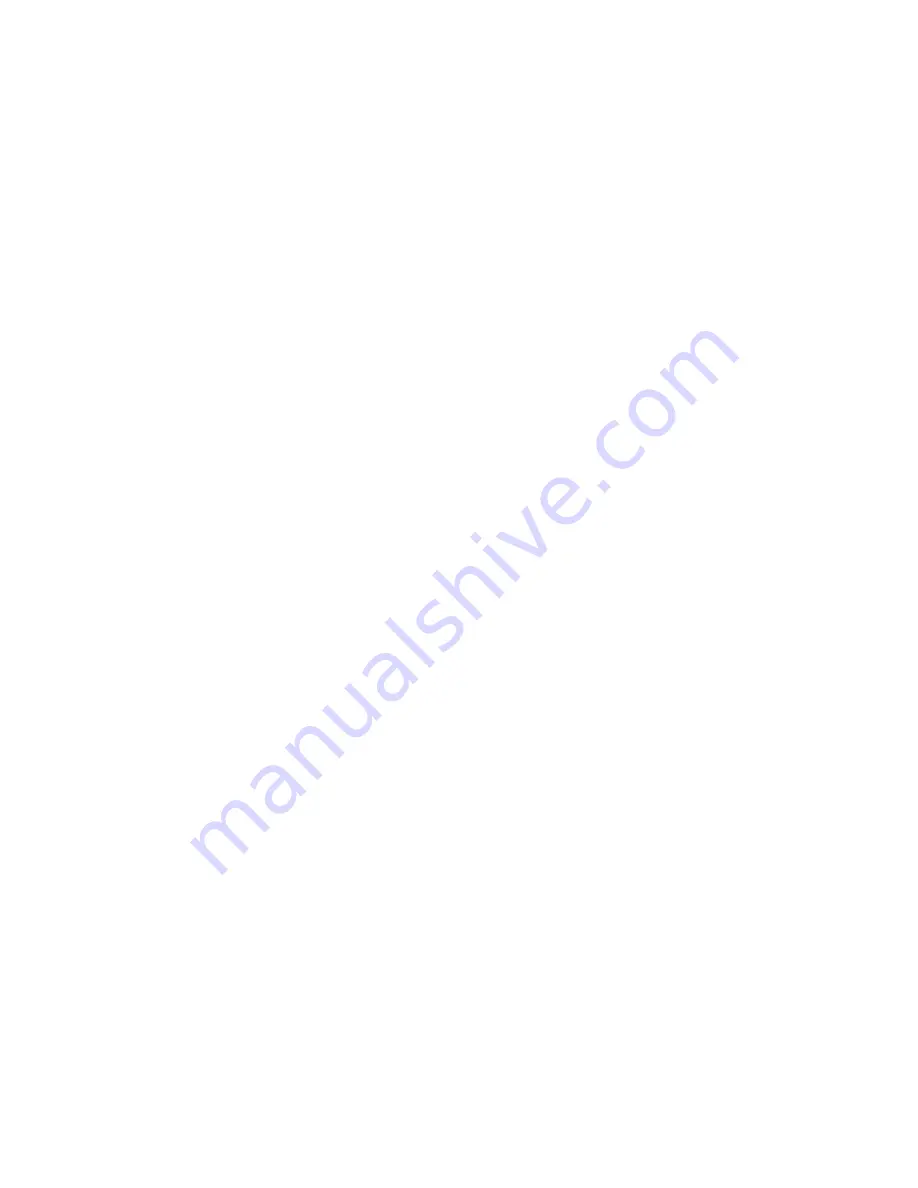
11
1) and log pusher (B in Figure 1) will
contact the log squarely on the ends.
7.
Two hand operation.
Depress the
Electric Motor Start Switch (F in Figure
1) with one hand. Wait a few seconds as
the motor warms up and creates pressure
in the Hydraulic pump. Then, when it is
safe to do so, depress the Operating
Handle (C in Figure 1). The Log Pusher
(B in Figure 1) will compress the log,
pushing it against the Wedge (J in Figure
1), thus splitting the log. Once the log is
split, release both the Electric Motor
Start Switch (F in Figure 1) and the
Operating Handle (C in Figure 1); this
will allow the log pusher to retract.
Warning: If the log does not split
immediately, do not force it by
maintaining the thrust for more than
a few seconds. This can damage the
machine. Instead, try repositioning the
log on the splitter, or set the log aside.
8.
Stack as you work.
This will provide
a safer, uncluttered work area to avoid
the danger of tripping over or damaging
the power cord.
9.
Remember
to retighten the BLEED
SCREW (Position 14 in Figure 5) when
you are finished.
HOW TO FREE A JAMMED LOG
1. Release both controls, so that the log
pusher (Position B in Figure 1) will be
fully retracted.
2. Insert a triangular wedge of wood
under the log, and activate the log pusher
to push the wedge under the jammed log.
3. Repeat this process using
progressively larger wedges, until the
jammed log is free.
Warning: Never hammer on the
jammed log, or place your hands near
the log when attempting to free it.
When attempting to free the
jammed log, never ask other
people to tamper with the
machine for help.
When the supporting feet are
blocked, never attempt to fix it
by striking it with a tool. This
may break the motor assembly.
Sharpening the Wedge
1. After long periods of operation, and
when required, sharpen the wedge using
a fine-toothed file and carefully remove
any burrs or flat spots on the edge.
Warning!
Be sure to unplug the power before any
maintenance work.
Changing the Hydraulic Oil
(The quantity of the hydraulic oil and
recommended type have been
previously indicated).
1. Make sure the Log Pusher (B in
Figure 5) is fully retracted.
2. Unscrew the Dip Stick (part 10) and
remove it together with the O-type oil
seal (part 11) (Figure 6).
3. Position a container under the log
splitter that will hold at least 4 liters of
oil. Then tilt the machine to empty the
oil into the container.
4. Tilt the log splitter the other way, with
the Oil Fill/Drain Port (see Figure 7) up.
Using a clean funnel, pour the Hydraulic
Oil into the hydraulic oil cylinder with
the volume previously specified. (Be
sure to use only clean, high quality
hydraulic oil specifically made for this
purpose).





















